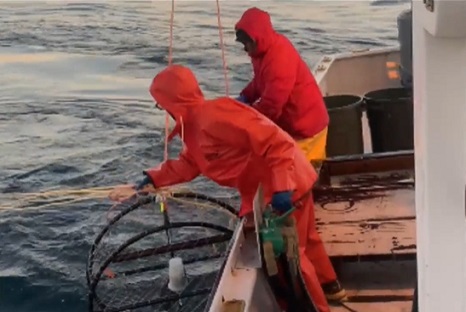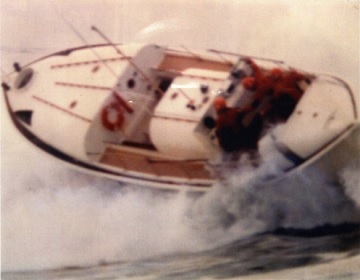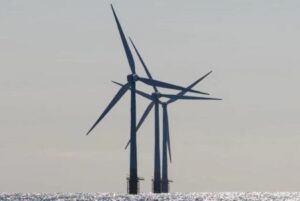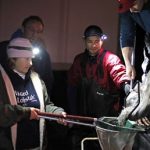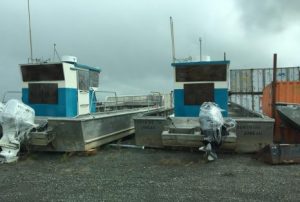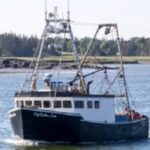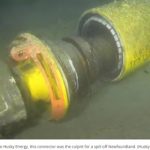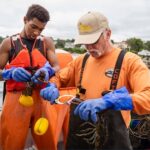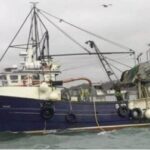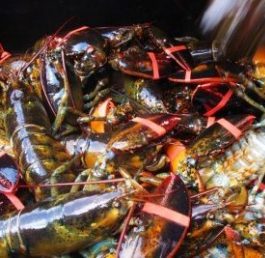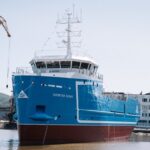Category Archives: Pacific

Different Ways to Cook the Perfect Scallops
It’s no surprise that scallops are a favorite of seafood lovers. Tender and slightly sweet, when properly prepared, they’re a culinary marvel. And, with a bit of guidance, you can create restaurant-worthy scallops right at home. Scallops can also be purchased either wet or dry. Opt for dry scallops whenever possible for a better taste and texture. Now that you have some background on which scallops to buy, let’s get cooking! Some excellent recipes for Seared Scallops, Grilled Scallops, Scallops in Cream Sauce, and many more! >click to read< 09:55
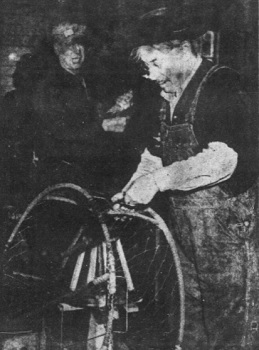
The Bodega Bay crab industry grew out of food demand during World War II
On a stormy spring day along the Sonoma Coast in 1951, brothers Steve and Bill Smith wove stainless steel wires around the sides of a steel crabpot in preparation for a day of crab catching. By the early 1950s, there were five fishing operations at Bodega Bay and about 100 fishermen who saw commercial crab fishing as a good side hustle, according to news reports at the time. Previously, Smith Brothers Fishery was the sole fishing business on the bay. Crab processing plants also employed women workers through the 1940s and 1950s to pick, weigh and pack Dungeness crabs. 18 photos, >click to read< 11:08
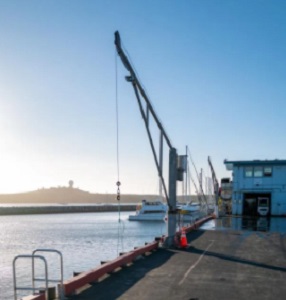
Public hoist can’t be used for commercial fishing – Commercial fish buyers may be on hook for harbor fees
The San Mateo County Harbor District is considering how to regulate sales between visiting fish buyers and commercial sellers within Pillar Point Harbor and will soon be discussing ordinances that will impact how much non-berthed vessels will pay in fees. After discussing the option of requiring visiting fishing vessels to obtain a Commercial Activity Permit before offloading product to a tenant fish buyer, the board directed staff to come back with an amended ordinance so that it would not officially require those visiting boats to pay $250 for the permit. This new ordinance will also determine if wholesale offloads to non-tenant buyers will be prohibited from the floating docks. >click to read< 09:39
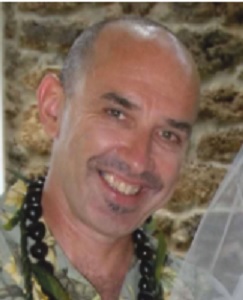
Alaska Commercial Fisherman Paul Richard Harder has passed away
Paul Richard Harder died unexpectedly at home in Hawai’i on Dec. 13, 2021 of a heart attack. Paul was born Aug. 22, 1951, in Seattle to Ole and Mary Harder. Paul started commercial fishing in Alaska with his father at 12; they were shipwrecked four days his first season but that didn’t deter him. He was a successful fisherman throughout Alaska. One of his Kodiak seining highlights was making a set of more than 40,000 pounds of red salmon; he had to radio his dad to load both of their boats. Paul’s big smile and sense of humor will be greatly missed. Paul’s Celebration of Life is deferred to a later date. >click to read< 21:15

Approval granted for removal of grounded American Challenger
The U.S. Coast Guard’s top commander has authorized use of federal dollars from the Oil Spill Liability Trust Fund to dismantle a 90-foot, decommissioned fishing vessel grounded on the rocks off the Marin Coast since last March. But the long-awaited consent means little until rough winter ocean conditions subside long enough to make salvage operations safe, officials said. The salvage “is approved, so it’s just a matter of time now,” said Eric Laughlin, a spokesman for the California Fish and Game Department’s Office of Spill Prevention and Response, which is handling communication for Unified Command. >click to read< 19:02
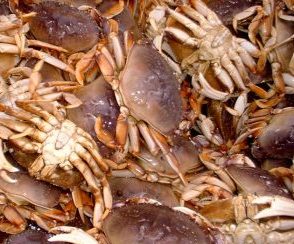
How to make the most of Dungeness crab season on the Sonoma Coast
Shawn Patterson, who fishes wild Pacific king salmon during its local season, has established Lisa Lu Fishery LLC and formed a partnership with Adam King. They recently acquired the crab boat F/V Susan E from a Bodega Bay fisherman. Lisa Lu Fishery is selling live crab for $10 a pound directly to consumers and $8 a pound to restaurants. Prices are higher than they often are, but that’s the case with almost everything during the pandemic. He expects to stay in the water until the state closes the season, after the bigger boats have pulled their pots and concluded their season. “We expect to have plenty for direct-to-consumer sales and farmers market sales,” >click to read< with some nice recipes! 09:47
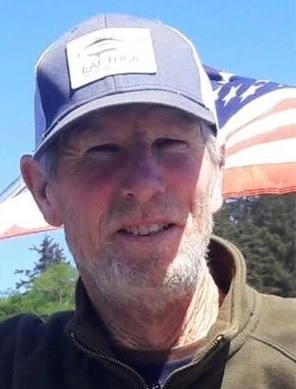
Commercial Fishermen/Marine Corp Veteran Mark Allen Chase has passed away in Newport, Oregon
Mark Allen Chase passed away on November, 28th 2021, at his home in Newport, Oregon, after a long and courageous battle with Neuroendocrine (carcinoid) cancer. Mark was born on June, 8th 1951, in Bellflower, California to his parents Ted and Shirley Chase. At a young age, Mark joined the Marine Corps and would serve in Vietnam where he earned a purple heart. He carried his patriotism and pride as a veteran with all he accomplished. After his service, His love of the ocean brought him to his 50 year career as a commercial fisherman and his home to Newport, Oregon. He owned and operated the fishing vessel F/V Norma M out of Newport and raised his four children to be avid fishermen as well. >click to read< 16:21

Alaskan fishing fleet catching huge proportion of B.C. salmon
As salmon runs in British Columbia hit record lows, commercial fisheries along the Alaska panhandle are catching a growing share of salmon bound for B.C. rivers, according to a new technical report. The report, which includes a detailed analysis on each B.C. salmon species caught in Southeast Alaskan interception fisheries, was commissioned by Watershed Watch Salmon Society and SkeenaWild Conservation Trust and comes as Canada and the United States begin their annual review of bilateral management under the Pacific Salmon Treaty. Many of B.C.’s largest salmon runs pass through Alaskan waters on their way home to spawn in Canadian rivers. >click to read< 11:50
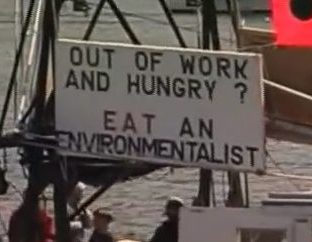
Lawsuit filed to Protect Pacific Humpback from fishing gear, Can lawsuits save North Atlantic Right Whale?
The Center for Biological Diversity sued the National Marine Fisheries Service today for failing to protect endangered Pacific humpback whales from deadly entanglements in sablefish pot gear off the coasts of California, Oregon and Washington. According to Fisheries Service estimates, the sablefish fishery on average kills or seriously injures about two humpback whales every year. The fishery uses 2-mile-long strings of 30 to 50 pots. >click to read< Can Litigation Help Save the North Atlantic Right Whale From Extinction? – As conservation organizations and governments around the globe grapple with the devastating effects of climate change and overexploitation, the legal battle fought over the critically endangered North Atlantic right whale, one of the world’s most endangered large whale species, may provide insights into how litigation can help, or hinder, efforts to save species from extinction. >click to read< 13:41
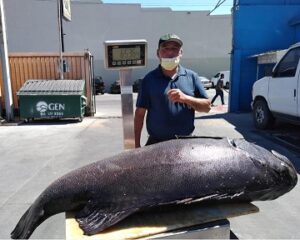
Giant sea bass: scientific research that found them critically endangered stopped at US-Mexico border
Giant sea bass live off the west coast of North America in both Mexican and U.S. waters. I have found that large differences in regulation and research effort between the two countries has led to a significant misunderstanding of giant sea bass population health. In California, commercial fishing for the species began in the late 1880s. Large fish used to be very abundant across the entire range, but the fishery collapsed in the early 1970s. As a response, in 1981 the U.S. banned both commercial and recreational fishing for giant sea bass, and there are many ongoing research and population recovery efforts today. The collapse and subsequent protection and flurry of research in the U.S. stand in stark contrast to Mexico. >click to read< by Arturo Ramírez-Valdez 12:14
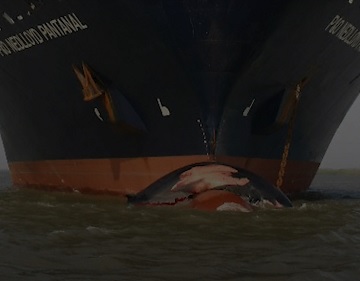
Ship strikes may be the difference between extinction and survival for whales
Ship strikes pose a serious threat to whales and have the potential to cause highly endangered subspecies to go extinct. The remaining 1.3 million whales left in our oceans are facing an increasing amount of shipping traffic when coming to the surface and travelling to their feeding or breeding areas. Global maritime traffic increased fourfold between 1992 and 2012. In some corners of the world, such as the Arctic, it actually doubled between 2013 and 2018. The number of whales, in the meantime, is on the decline. >click to read< 07:43

Shortened Dungeness crab season reflects industry uncertainty
Commercial crabbers have made quick work of this year’s Dungeness crab harvest, bringing substantially fewer crustaceans ashore with each lift. The haul has been so meager that even those who ply the waters south of Mendocino County,,, Closures and major catch restrictions in Alaskan crab fisheries, where king and snow crab stocks have plummeted, has heightened demand this winter for the Dungeness crab caught off Central and Northern California. “The thing that’s saving us is the price,” said Dick Ogg, “We’re down to two or three crabs per pot,” said Bodega Bay fisherman Tony Anello, one of many getting ready to pack it in. (Then the conversation of ropeless fishing begins,,,) >Click to read< – Campaigners say ropeless technology could spare whales in the Firth of Forth >click to read< 09:28
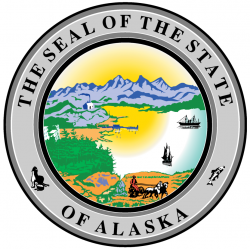
Dunleavy Announces Alaska Bycatch Review Task Force Members
Governor Mike Dunleavy released the list of eleven Alaskans who will serve on the Alaska Bycatch Review Task Force. The mission of the task force is to better understand the unintended bycatch of fish such as halibut and salmon caught in both State and federal waters. The two remaining seats on the task force will be non-voting seats filled by members of the Alaska Legislature. “The 11 Alaskans who stepped forward to serve on the Alaska Bycatch Review Task Force represent key stakeholder groups and are recognized for not only their knowledge of fisheries, but their commitment to sustaining the resource for generations of Alaskans to come.” >click to read< 07:50
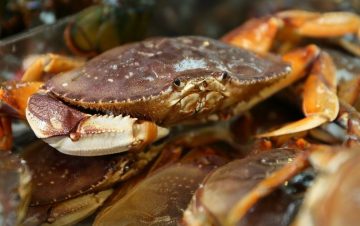
Off Washington state’s coast, Dungeness crabbers get early start to season, haul in bounty
Some 60 vessels in Washington’s oceangoing crab fleet worked through a stormy December to bring in more than 4.69 million pounds of Dungeness in a strong start to the annual harvest. The ocean harvest has unfolded in a stretch of coastal waters from Klipsan Beach south to the Columbia River. Fishers also have had to endure some tough, chilly weather during the final weeks of 2021. “We’re all from Alaska so it seems pretty normal to us,” said Daniel Crome, who was raised in Petersburg, Alaska, and fishes out of Westport with a five-person crew that as the catch rates dropped off, was cut to four. Back at the docks, these Dungeness have fetched $4.75 a pound or more. >click to read< 08:23
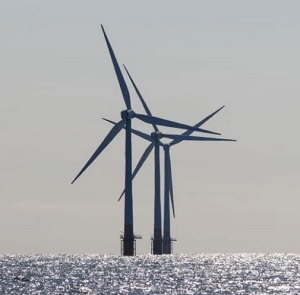
Fishermen, residents voice concerns about proposed Morro Bay offshore wind farm
An area of ocean 20 miles from the Cambria shoreline and about 35 miles northeast of Morro Bay could become home to nearly 400 square miles of wind turbines,,, Many, like Cheri Hafer, are concerned the area will prohibit commercial fishing. “One of our biggest enemies right now is industrialization of the ocean,” Hafer said. “Not just to fishermen, but to the marine habitat.” Larry Thevik, a dungeness crab fisherman, said many fishermen feel like their concerns aren’t being heard and that the impact it may have on the commercial fishing industry isn’t being thoroughly considered. >click to read< Public critical of environmental analysis for Morro Bay Wind Energy Area – A number of public speakers at an offshore wind energy impact analysis scoping meeting said a full environmental impact statement should be prepared before the federal government leases tracts in an area northwest of Morro Bay. But officials with the Bureau of Ocean Energy Management said a full EIS can’t be conducted on the effects of wind turbine installation,,, >click to read< 12:12

Oregon: 2021-22 Dungeness Crab season blowing past last year’s harvest
Tim Novotny is a spokesman with the Oregon Dungeness Crab Commission. He says it was great to have this commercial crabbing season start on schedule for the first time since 2014, but the numbers as of Tuesday (Jan. 4) are also wonderful. “We finished our first month of the season so far with 12.8 million lbs. landed, so that surpassed last year. And our ex-vessel value has come in at $63.3 million. So that surpassed all of last year. >click to read< 09:50

Fire guts commercial fishing boat but spares injury
A man escaped injury in a boat fire last week in the Ilwaco marina. The F/V Tlingit Princess was billowing smoke from the cabin as authorities descended on the scene early Sunday afternoon at the Port of Ilwaco. Owner Earl Soule was the lone occupant on board at the time of the fire and was able to safely evacuate. “Everything I’ve got is in there,” Soule said as he watched the Ilwaco Fire Department douse flames flickering through the cabin windows. photos, >click to read< A GoFundMe campaign has been established. – Help Earl Soule rebuild after the fire – Please, donate if of you can and help them meet their goal. >click here< 14:46
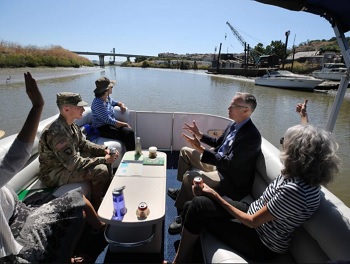
California poised to impose wave of boat emissions rules in 2022
Like users of lawn mowers and gas leaf blowers, working boat captains, excursion operators and fishermen will be asked told to get on board with new engine emissions regulations starting as early as 2022. The California Air Resources Board released its proposed emissions regulations on commercial boats in September. After hosting hundreds of meetings and receiving an opposing petition signed by thousands of sport fishers in California, the air quality agency expects to finalize the first in a montage of stricter guidelines to upgrade the boats by next spring. >click to read< 13:21
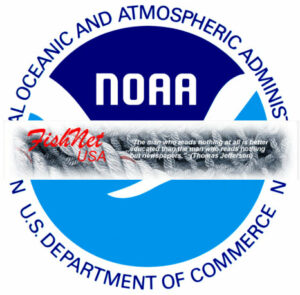
Fisheries management isn’t supposed to be robbing Peter to pay Paul
MAFMC and ASMFC Approve Changes to Commercial and Recreational Allocations of Summer Flounder, Scup, and Black Sea Bass,,, For all three species, these changes result in a shift in allocation from the commercial to the recreational sector. At the same time, using the same “scientific” rationale to disguise what seems nothing more than a blatantly political decision, the Gulf of Mexico Fishery Management has recommended that the red grouper fishery also be reallocated,,, If NOAA/NMFS is allowed to continue using the new MRIP Fishing Effort Survey, every mixed use fishery from Maine through Texas should expect attempts at quota allocation shifts from the commercial to the recreational sector. >click to read< By Nils Stolpe/FishnetUSA 13:52
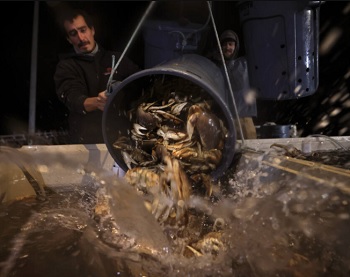
Sonoma Coast Dungeness crab arrives in local markets
Dick Ogg seemed to be relieved to be bringing in a haul of Dungeness crab now that the season has started after a delay of more than a month. “It’s OK,” Ogg said when asked about the haul he had on his boat, Karen Jeanne, which was about 2 miles from shore. “I’m not going to say it’s great. But it’s OK.” Ogg noted that the season provides an economic shot-in-the-arm for those tied to fisheries, especially the estimated 30 crabbers docked in Bodega Bay, the processors who transport the crustaceans, and the markets and restaurants that sell the product. photos, >click to read< 08:43

Half Moon Bay fishermen optimistic about Dungeness crab season opening
“I’m a little optimistic. Everyone thinks there is a little more this year than last year, and the weather the next handful of days look really nice,” crab fisherman Scott Edson said. Edson, who will be fishing out of Point Reyes this year with a crew of two on his 36-foot boat, has spent the last few days getting ready for the upcoming crab season the next few months. He has less pressure this season after a great salmon season,,,“I think it’s gonna be better than last year, maybe a little better,” Edson said. Porter McHenry, who fishes out of Pillar Point in Half Moon Bay, agreed. >click to read< 08:50

Commercial Fisherman Benjamin Eric Boyok has passed away
Benjamin Eric Boyok set sail for the last time on Wednesday, Nov. 17, 2021, in Cloverdale. Benjamin was born July 7, 1978, to Philip (Otis) Boyok and Paula (Parmelee) Boyok. He attended East High School in Sioux City. He then moved to Oregon and worked as a commercial fisherman in the Bering Sea for over 20 years where he was well respected by his peers. He was the loving and devoted father of his son George and daughter Otilja. >click to read< 19: 47
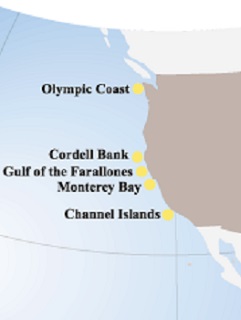
Sanctuaries aren’t working
One of the things I am not seeing in the discussion over a new marine sanctuary off our coast is how well are the ones we have working? As written by Lori French, “Unnecessary protection, there are four national marine sanctuaries designated in California since 1980. Also, there are 124 state marine protected areas, reserves and preserves, plus another five rock fish conservation areas. From the point of view of fishermen, all of this coverage is not producing more fish. The promised “spillover affect” hasn’t worked. So what is the answer from government and environmentalists? >click to read< 14:00 By Steve Rebuck

The Biggest Corporate Welfare Recipients Ever: Big Wind and Big Solar
How much do solar, wind and electric vehicle companies get in federal handouts and tax loopholes in President Joe Biden’s Build Back Better bill? Well over $100 billion in taxpayer largesse. If all the tax credits are included, that number could reach half a trillion dollars. No other industry in American history has ever received this lucrative paycheck. The folks at the Institute for Energy Research calculated that this is on top of the more than $150 billion in subsidies these industries received from Uncle Sam in the last 30 years. The umbilical cord to taxpayer wallets never gets cut. Yet, laughably, the left says all these subsidies to “green energy” are necessary for an “infant industry.” >click to read< 11:13

Crab Fisherman Zip-Ties a GoPro Camera Inside a Crab Pot – a Feeding Frenzy Ensues
Have you ever wondered what happens inside crab pots when they’re underwater? Fortuna resident Robert Wall decided to find out. “My friend John said we should put a GoPro in one of the pots. Honestly, I was just curious and wanted to see what goes on down there.” So they zip-tied the little camera to the inside of the cage, loaded some herring and chicken in there for bait and pressed record. Before the silt has settled, the shadows of hungry Dungeness descend, their claws and legs clattering against the bars of the metal grate. “I didn’t expect the crab to be at the pot in under 30 seconds,” Wall said. “It gets pretty crazy down there.” Video, >click to watch< 07:54
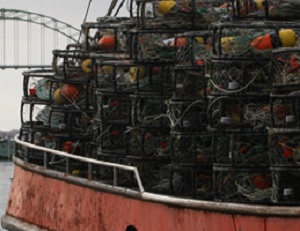
Commercial Fishing Safety on the West Coast
In 2009, NIOSH completed an in-depth study of commercial fishing fatalities in the United States for the decade spanning 2000-2009. The purpose of the study was to identify the most hazardous fisheries around the country and to describe the unique safety issues in each. For this study the US was divided into four fishing regions: Alaska, West Coast, East Coast, and the Gulf of Mexico. The results of this analysis for the West Coast region can be found in the document,,, >click to read< 13:18

Proposed Chumash Heritage National Marine Sanctuary – Unnecessary protection
Currently there are five National Marine Sanctuaries off the West Coast, four of which are located off the coast of California. California also has 124 Marine Protected Areas with an additional five Groundfish Conservation Areas. Here on the Central Coast, the waters off of Diablo Canyon Power Plant and Vandenberg Space Force Base are restricted and hinder our ability to provide you with fresh seafood sustainably harvested. Another protected area is just not needed off the Central Coast. We must also be cognizant that jobs may be lost as a result of the sanctuary’s designation. >click to read< 15:01 By Lori French






